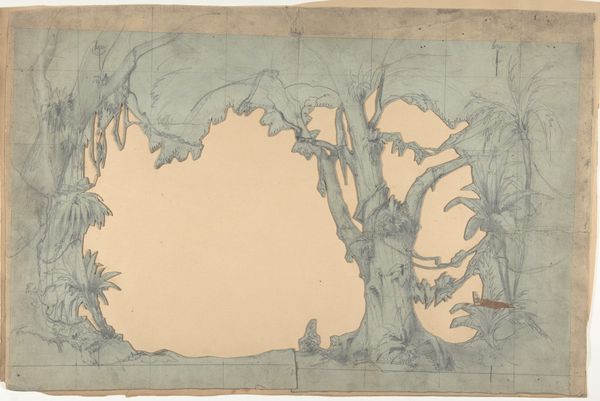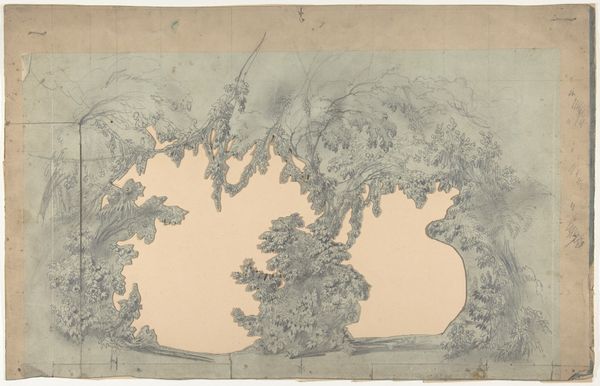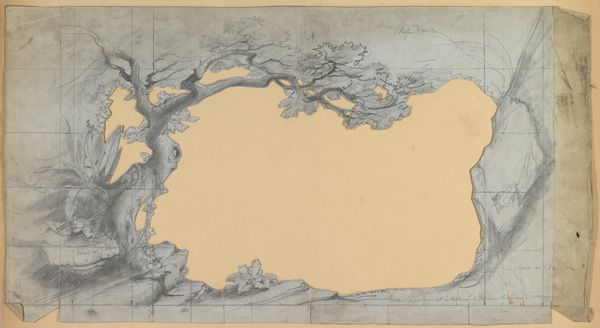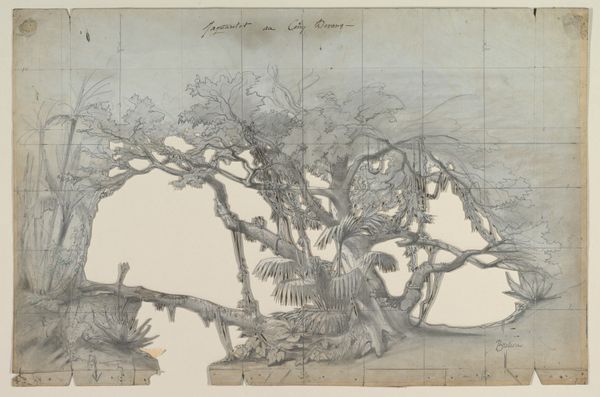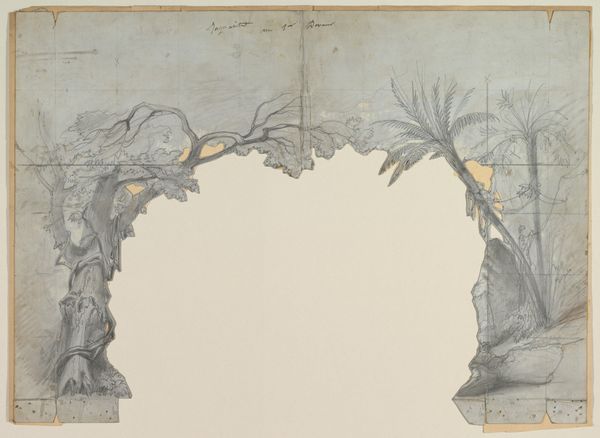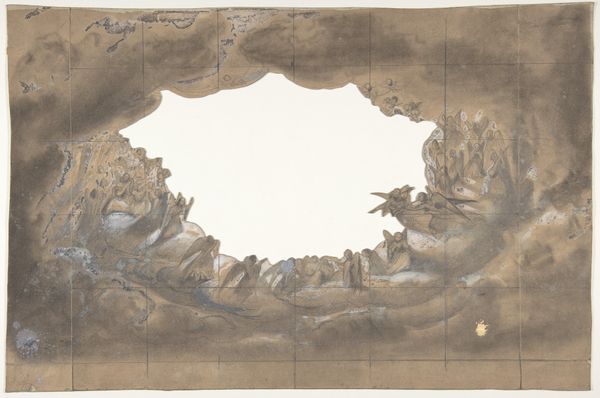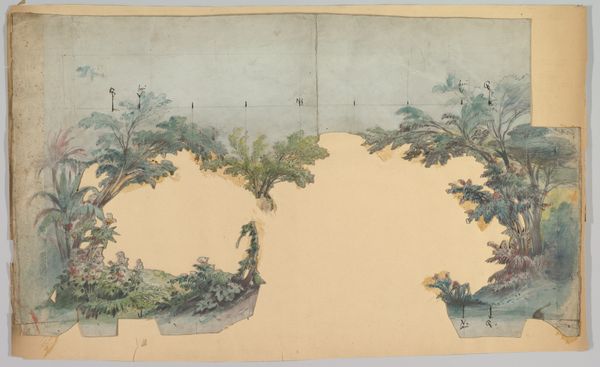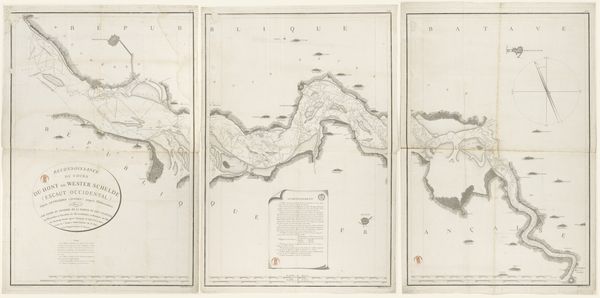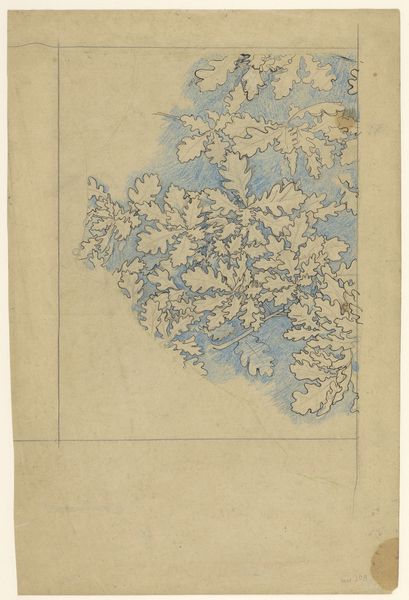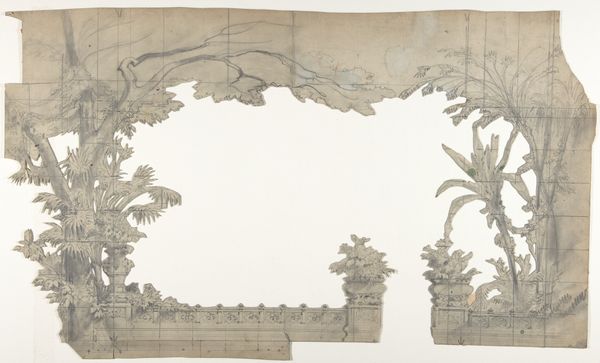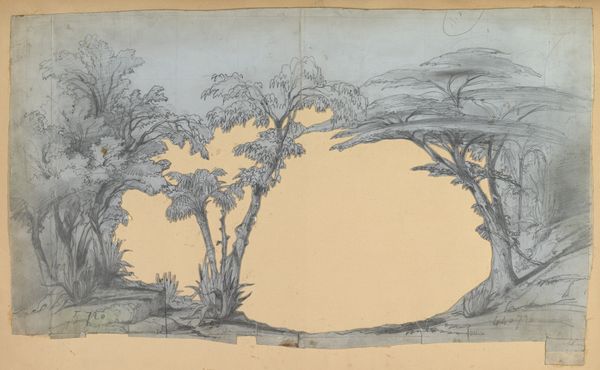
drawing, mixed-media, print, paper, pencil
#
tree
#
drawing
#
mixed-media
# print
#
landscape
#
paper
#
form
#
coloured pencil
#
underpainting
#
pencil
#
line
#
academic-art
#
mixed medium
Copyright: Public Domain
Curator: Eugène Cicéri created this "Design for a Stage Set" sometime between 1830 and 1890, utilizing mixed media—pencil, coloured pencil, and other methods—on paper. It’s a fascinating piece held here at The Met. Editor: It strikes me as intentionally incomplete, almost unsettling in its exposed structure. You see the grid, the layers...it feels raw, more about the process than the finished product. Curator: Indeed. Look at how Cicéri uses line to define the foliage. The varying weight creates depth, wouldn’t you say? The strategic use of colored pencil adds subtle highlights, drawing attention to key areas within the composition. Editor: From my perspective, considering the piece's potential usage for stage design reveals its power. The proscenium beckons a spectacle and speaks volumes about nineteenth-century theatrical aesthetics, which romanticized exotic landscapes. Do you think this set design romanticizes nature or colonizes its image, making nature subservient to theater? Curator: It's a point worth dwelling on, certainly. But focus how the asymmetry here actually energizes the design; the void serves not just as space, but a kind of tension, ready to be filled, and it achieves a rather fine visual equilibrium through form and line. Editor: That’s very well put, as this void also poses several questions related to performance. The incompleteness might highlight theater production processes and the artistic merit involved in each piece of scenography. This work acts like a kind of archive, it allows one to trace the transformation of material and to re-imagine its application on stage. Curator: Thinking about stagecraft illuminates Cicéri's sophisticated understanding of spatial illusion. Notice how the converging lines suggest depth despite the two-dimensionality. The materiality—the visible paper, pencil strokes, pigment—creates an oddly tactile experience. Editor: And further still, knowing it was intended as a design—a proposal, in effect—gives it a completely different valence, speaking to the role of institutional power in both artmaking and theater during that period. I mean, did this design ever get used? What did Cicéri seek to convey? I feel these gaps call us to reflect further on art, representation, and purpose. Curator: You've successfully steered us toward a productive consideration of its context. As always, a conversation about aesthetic execution necessarily informs discussions around meaning and influence. Editor: It's those layers, literal and historical, that render this design compelling. Thanks for opening my eyes, again.
Comments
No comments
Be the first to comment and join the conversation on the ultimate creative platform.
